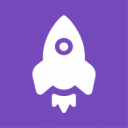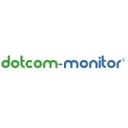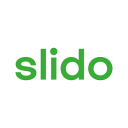General information about New Relic
New Relic is a leading observability platform that offers a comprehensive suite of tools to monitor, debug, and enhance the performance of your entire tech stack. With over 30 integrated capabilities, New Relic provides unparalleled visibility into applications, infrastructure, and network performance, enabling teams to identify and resolve issues swiftly.
The platform's application performance monitoring (APM) is renowned for its ability to deliver real-time insights, allowing users to optimize their systems for better efficiency and reliability. New Relic's infrastructure monitoring capabilities ensure that all components of your tech stack are functioning optimally, while its error tracking feature helps in quickly identifying and addressing anomalies. The platform's flexible pricing model is based on actual usage, ensuring cost-effectiveness without overages or penalties.
With over 750 integrations and a generous free tier, New Relic is designed to meet the needs of businesses of all sizes. Explore the robust features and discover how solutions like New Relic can transform your data into actionable insights. Check out the latest offers on our marketplace and start your journey towards enhanced observability and performance today.
See alternatives to New Relic like Sentry or Splunk enterprise.What is New Relic used for?
New Relic is an essential tool for small businesses looking to optimize their web and mobile applications. It allows real-time monitoring of these applications' performance, quickly identifying and resolving issues that could affect the user experience. For example, if an e-commerce application experiences slow loading times, New Relic can help identify and resolve the problem. Additionally, its integration with other development platforms makes developers' work easier. Finally, thanks to its detailed reports, businesses can make informed decisions to improve their services.New Relic features
Comprehensive observability for your entire tech stack.
-
Integrations
Supports over 750 integrations, allowing seamless connection with various tools and services to enhance data collection and analysis capabilities.
-
Dashboards and visualizations
Delivers customizable dashboards for visualizing key metrics and data, facilitating informed decision-making and performance tracking.
-
Application performance monitoring (APM)
Provides real-time insights into application performance, helping teams identify bottlenecks and optimize system efficiency for improved user experiences.
-
Infrastructure monitoring
Offers detailed visibility into infrastructure components, ensuring optimal performance and quick detection of issues across servers, containers, and cloud environments.
-
Error tracking
Enables swift identification and resolution of errors, reducing mean time to resolution (MTTR) and enhancing application reliability and user satisfaction.
27 New Relic Reviews
-
Stephanie
New Relic: Leading the Industry with Continuous Updates and Innovative Features
The constant updates and new features added to New Relic show their commitment to stay ahead in the industry.
October 7, 2024
-
Kelly E
Experiencing New Relic: Newsletters and Customer Service
I've been using New Relic software and I must say, their regular newsletters are quite informative and I receive them almost daily! However, I'm still eagerly awaiting a response to my customer email. I'm sure they're just as prompt with their customer service as they are with their newsletters!
September 30, 2024
-
Rebecca
Exceptional Depth of Insight: New Relic Monitoring Tool Review
I've used many monitoring tools, but the depth of insight provided by New Relic is exceptional
September 23, 2024
New Relic: Pros & Cons
Pros
-
Comprehensive observability: Offers a wide range of monitoring and debugging tools in one platform, providing end-to-end visibility across the tech stack
-
Scalable pricing model: Usage-based pricing ensures cost-effectiveness by charging only for actual usage, with no overages or penalties
-
Extensive integrations: Supports a vast number of integrations, enhancing the platform's flexibility and adaptability to various environments
Cons
-
Cost considerations: While the pricing model is flexible, costs can escalate with increased usage, particularly for large-scale deployments
-
Complexity for beginners: The extensive range of features may be overwhelming for new users, requiring a learning curve to fully leverage the platform
-
Potential performance impact: Monitoring tools can sometimes introduce overhead, potentially affecting application performance if not configured properly









